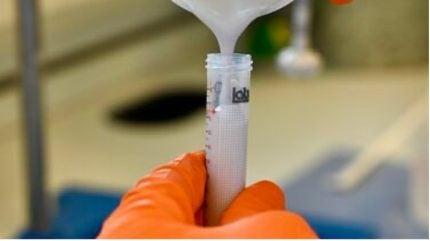
The UK has launched a £1m ($1.3m) research partnership to explore the use of limestone calcined clay cement (LC3) in nuclear waste encapsulation. The University of Sheffield, Sellafield Ltd, the Nuclear Decommissioning Authority NDA) and the UK National Nuclear Laboratory (UKNNL) will study how characteristics and amounts of calcined clays can produce cement encapsulants that support safe and reliable nuclear waste conditioning and disposal at Sellafield.
“This partnership will enhance our overall programme of work focused on development of new cement technologies for the nuclear sector and will enable our cross-sector team based at both the University of Sheffield and Sellafield to further strengthen its position as a global leader in cement science and engineering, said Brant Walkley, Senior Lecturer and Head of the Sustainable Materials at Sheffield research team.
The Centre for Cement & Concrete, based in the Department of Civil & Structural Engineering at the University of Sheffield, is the largest concrete academic research centre in the UK. The centre offers a wide range of services to government and industry, including fundamental research, consultancy, and postgraduate training.
Nuclear energy currently provides 20% of the UK’s energy and the nuclear industry is investigating how to condition and dispose of radioactive waste safely and securely. Legacy, current, and planned UK nuclear facilities are estimated to generate 450,000 cubic metres of radioactive waste by the end of the century. Currently most radioactive waste is encapsulated in cement.
Dr Walkley said: “The researchers at Sheffield are experts in cement chemistry and engineering as relevant to the nuclear sector, while the Centre of Expertise for Cement and Process, led by Dr Stephen Farris at Sellafield Ltd, are experts in industrially-focused research, development, and implementation of cement encapsulants to condition complex waste streams.”
The cement industry is currently investigating blended Portland cements incorporating calcined clays, in particular limestone calcined clay cement (LC3) a promising new type of environmentally friendly cement. LC3 is produced using naturally abundant limestone and clay materials reducing CO2 emissions during its production. It is also capable of meeting the huge scale of demand for cement and concrete.
The research at Sheffield lays the groundwork for using this new material for encapsulating and safely storing and disposing of nuclear waste, and will help to better understand how it behaves. It will support future development and implementation at Sellafield supporting safe and reliable conditioning and disposal of UK nuclear waste.






